Explore Montalcino's Medieval Charm and Savor Brunello Wine. Discover Italy's Treasured Village on Your Tuscan Journey.
Read more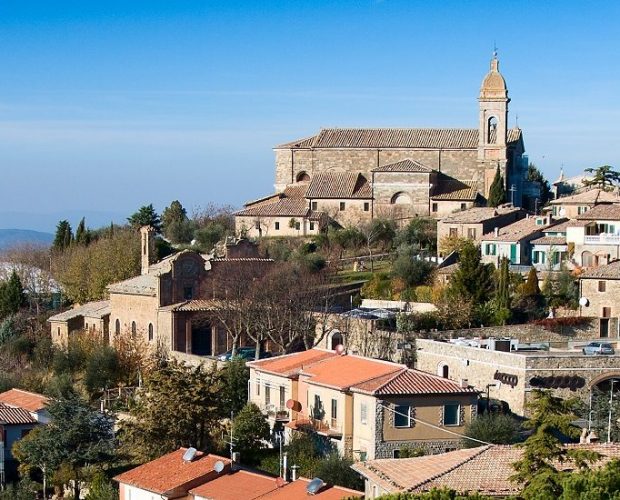
EXPLORE ALL OUR TUSCANY WINE REGION GUIDES
Last updated: May 15, 2025
Montalcino, located 40 kilometers south of Siena, is the birthplace of Tuscany’s seminal red wine. The wine is the dense, powerful, and virtually indestructible Brunello di Montalcino. Yet the international community once ignored this (very beautiful) hilltop village, mired in poverty and hamstrung by its geographical isolation. Its salvation came in the late 1980s when a US investor decided to put Montalcino on the global map. After dramatically increasing the area under vine, Banfi started exporting an expression of the Sangiovese grape. This was quite different from Chianti – richer, ripe, and more robust. US consumers quickly succumbed to seduction, and copycat wineries promptly emerged across the region. The award of DOCG status only enhanced its appeal and renown; Brunello di Montalcino had arrived. It offers an authentic slice of the Tuscan dream and is an absolute favorite of collectors and sybarites.
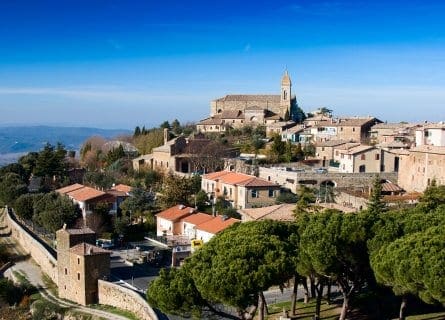
Since the pre-Roman era, Viticulture has been part of Montalcino’s economic and cultural life. According to historians, the Etruscans inhabited the region in the 9th century BC. They were a civilization that treated the vine with a reverence only equaled by their Roman conquerors. Indeed, the forces of Rome captured the city of Etruria in 265 BC. This victory led to over a century of conflict and rebellion. This reached its zenith during the Punic Wars; Etruscan generals allied with the forces of Carthage to give the Romans a bloody nose at the battle of Lago Trasimeno, killing over 15,000 Roman soldiers. However, the parties finally agreed upon a truce. In 88 BC, they awarded the Etruscans citizenship, in addition to regional autonomy in the newly created province of Tuscia.
All hell broke loose after the Western Roman Empire fell apart in AD 476. Several rising powers had designs on Tuscany, including the German emperor Theodoric, the Byzantine emperor Justinian, and the Lombards. They conquered most of the Italian Peninsula in the 6th century, maintaining relative peace for over two hundred years. However, the Frankish knight Charlemagne crossed the Alps into Italy in 773, fighting the Lombards and taking ownership of Tuscany. He would become the first ruler of the Holy Roman Empire, a polity that endured until 1806.
In the Middle Ages, one of the first recorded mentions of the word Brunello occurs in the town of Montalcino – the name means “nice dark one” in a local dialect. From its earliest days, Brunello di Montalcino was elaborated as a long-lasting style, undergoing a drawn-out fermentation. To achieve this, the wine spends many years in oak barrels, transforming it into an intense wine with biting tannins that soothe with age. Meanwhile, fifteenth-century Italy saw a flowering of the arts and scholarship unmatched in Europe since ancient Greek and Roman times. The rich banking dynasty, the Medici, rulers of Florence from 1434, lavished their patronage on the city of Florence. This patronage fueled a flourishing artistic movement, with architects finding inspiration in humanism and the natural world. Its most famous alumni include painters and sculptors Donatello, Botticello, Leonardo da Vinci, and Michelangelo.
In the 19th century, Clemente Santi’s grower refined his knowledge and understanding of the Sangiovese grape, producing the first expression of Brunello di Montalcino that we would recognize today. In 1869, Santi received a silver medal for his 1865 vintage, and a legend was born: Despite only releasing four vintages between 1888 and 1945, Biondi-Santi remains one of the most renowned and highly regarded producers in the appellation. Yet the American firm Banfi put Brunello di Montalcino on the international map, investing heavily in vineyards and infrastructure in the late 20th century. Awarded DOCG (Denominazione di Origine Controllata e Garantita) status in 1980, Brunello di Montalcino has morphed into a fine wine superstar.
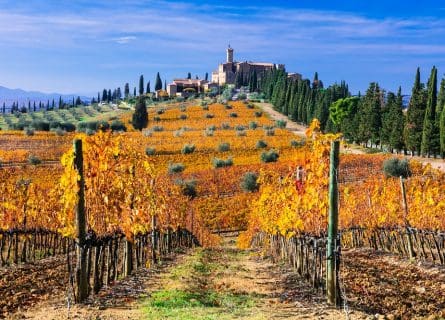
Although Montalcino lies just beyond Chianti Classico in the southern reaches of Tuscany, it yields a very different expression of the Sangiovese grape. This is largely because the zone is warmer and drier than Chianti, with breezy nights that ensure ventilation. Nevertheless, the summers are extremely dry – Monte Amiata, rising to 1,700 meters just to the south, protects the region from summer storms that come from that direction. Indeed, Montalcino has the double advantage of the sunny climate of the Tuscan coast and the rockier, less fertile soils of the cooler Chianti Classico zone. In top vintages, this results in the most concentrated and structured form of Sangiovese on the planet – wines that can outlive their owners!
In addition, although Montalcino is culturally similar to Chianti, the appellation has sandier soils and more limestone than those further north. Moreover, there are significant differences in vineyard elevation, resulting in a patchwork of mesoclimates and a pleasing stylistic divergence across the region. Some of the lowest-altitude climats (vineyard sites) in the south’s Val d’Orcia contain old vines that yield very potent and alcoholic reds at 150 meters above sea level. Most notably, the late Andrea Franchetti used these heavy clay soils to fashion superlative Bordeaux blends and even a dry Semillon! Meanwhile, in the northernmost reaches of the DOCG, soils are more calcareous and enjoy a cooler microclimate. Vineyard elevation can rise to 500m just south of Montalcino, where galestro marls yield a more perfumed and elegant expression of Brunello.
Today, there is a smattering of international grape varieties cultivated in Montalcino, including Cabernet Franc, Merlot, and Cabernet Sauvignon; Montalcino Super Tuscans are among the finest in central Italy. However, the Brunello di Montalcino DOCG framework only permits 100% Sangiovese wines – no exceptions. This stands in marked contrast to the more liberal approach of Chianti Classico, where they allow the incorporation of a small percentage of additional varieties into the blend. But local traditions eschew this approach, believing they can ‘smudge’ Sangiovese’s highly distinctive character. The combination of a stellar variety and the careful, labor-intensive, and expensive elaboration of the wine has made Brunello di Montalcino one of Italy’s most exclusive and most expensive wines throughout the twentieth century – a true favorite of collectors.
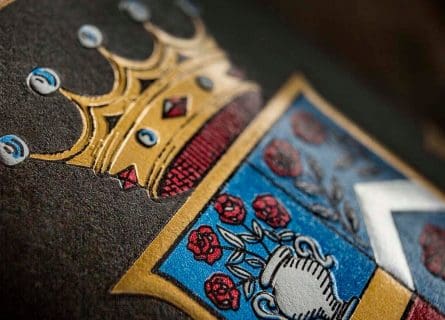
Historically, Montalcino producers adhered to a paradigm strikingly similar to the winemaking philosophies of Barolo and Barbaresco. This involved a long and slow fermentation in oak or chestnut botte (large vats), with extended maceration on the skins. Thus, they extracted a great deal of tannin, color, and acid from this difficult grape – maturing it in large old Slavonian oak casks for several years helped to soften this austerity. Further aging in bottle could make Brunello di Montalcino approachable (we kid you not!) in about ten years after the harvest – occasionally longer. The result was a muscular, robust red supercharged with color, flavor, and impact. The library of vintages dating back to the 19th century at Biondi-Santi is a testament to the extraordinary longevity of this unique style.
But Montalcino is not immune to the vagaries of consumer fashion; today, people seek wines that they can enjoy at a relatively young age. In lieu of that reality, the mandatory four years in oak were reduced to two (the wine cannot be released until it is four years old), so modern examples showcase fruit alongside tannin. Certain winemakers have also taken to maturing their wines in new French barrique, creating a more standardized version with smooth tannins and that quintessential bouquet of cedar, tobacco, and vanilla. Are they better wines? Perhaps, but many firms, including Biondi-Santi, prefer the neutrality of used Slavonian oak barrels. The crème de la crème are Brunello Riservas, aged for five years before release. They are both rare and expensive.
Montalcino was also the first higher-tier appellation in Italy to permit the creation of a ‘junior’ appellation – Rosso di Montalcino. Founded in 1984, the DOC allows vintners to release a wine after only one year of aging instead of Brunello’s four. These lighter reds are easier to drink than their more established counterparts and generally represent an excellent value. But, in the eyes of collectors, they will always play second fiddle to the genuine article.
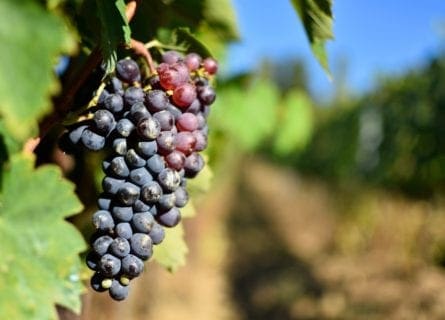
In the late 20th century, Banfi transformed a sleepy backwater into a thriving hub of fine wine and upmarket tourism. Within 15 years of their arrival, there seemed scarcely a piece of land not planted with vines, largely Sangiovese clones that can thrive in the region’s very hot and dry climate. Collectors remain enthralled with Brunello di Montalcino, paying almost any price for these immortal reds: all the best qualities of Sangiovese amplified under the Tuscan sun.
However, you should not limit your aspirations to Brunello di Montalcino. The region increasingly offers an eclectic palate of Super Tuscan wines, the best of which can rival Tignello and Solai in their depth and complexity. Initially sold as defiant Vino da Tavola, these outliers are nowadays marketed as Toscana IGT (Indicazione Geografica Tipica). This has empowered local producers to experiment with various grape varieties, including Cabernet Franc and Pinot Noir. After a process of trial and error, winemakers are fashioning wines that are complex, firm, and savory rather than simply voluptuous. The best are a worthy alternative to the more traditional reds of the appellation.
According to the late Andrea Franchetti, Cabernet Franc is Montalcino’s biggest – and most underrated – success story. “Cabernet France is a great ingredient in Bordeaux and Tuscany – greater sun exposure can transform its potential to make excellent standalone varietal wine,” once observed Franchetti. “Cabernet Franc is richer, more complex and the variety is far more durable than Merlot, particularly as it gets warmer in our changing climate.
In the 21st century, Cabernet Franc is now substituting the role of Cabernet Sauvignon as the prime red grape of Italy and southern Europe.” Succeeded by his son, Benjamin Franchetti, the family’s grand vision of producing exceptional Bordeaux varietals continues at the Tenuta di Trinoro estate. Situated at the entrance to the Val d’Orcia, Franchetti also grows Semillon to perfection here, producing one of the best examples of the grape outside of Pessac-Leognan. Meanwhile, Romitoro (Petit Verdot and Syrah, no less!), Mastrojanni, and Poggio il Castellare are making exceptional Super Tuscans with Italian brio and a judicious amount of oak.
Yet pundits and critics often drag up a false dichotomy: should a region focus exclusively on traditional styles and grape varieties or seek to innovate with bold new flavors? Montalcino demonstrates that you can do both. The proof, as ever, is in the eating.
Chardonnay is a green-skinned grape varietal native to the Burgundy wine region in France and one of the most popular varieties worldwide.
Find out moreDiscover Pinot Grigio's Transformation: From Ordinary to Exceptional in Italian White Wine. Explore the Revolution!
Find out moreThe sauvignon blanc grape varietal, originally from the Bordeaux region of France, is now one of the world's most loved white varieties.
Find out moreCabernet Franc grape is a close relative of Merlot and Cabernet Sauvignon and is the principal blending grape used in Bordeaux.
Find out moreDiscover the irresistible allure of Cabernet Sauvignon—a worldwide favorite with robust, dark-bodied flavor. Unleash your wine journey today!
Find out moreMerlot is the most cultivated grape in Bordeaux and closely related to Cabernet Franc
Find out morePinot noir is a light-bodied red wine varietal closely related to the Vitis vinifera grape and produces the most sought-after red wines in the world.
Find out moreUnearthing Sangiovese: Italy's Ancient Grape with a Complex History. Explore its journey from Etruscans to modern-day excellence.
Find out moreRural Tuscany is all about fresh ingredients and seasonality: garlic, asparagus, baby artichokes in the spring, chestnuts, porcini mushrooms, game, and white truffles (perfectly shaved over pasta) in the fall/winter. Yet some of the region’s top culinary highlights are brilliantly unpretentious and readily available, such as porchetta rolls (warm sliced pork, fennel, garlic, and pepper served in ciabatta) and torta di ceci, which is a savory chickpea cake—a feast for the senses that is easygoing on the wallet.
A Guide to the Gastronomy and Cuisine of Tuscany: Read more

Explore Montalcino's Medieval Charm and Savor Brunello Wine. Discover Italy's Treasured Village on Your Tuscan Journey.
Read more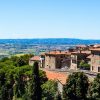
Visit Cortona, Tuscany's hilltop gem with Etruscan roots, Renaissance art, and stunning Val di Chiana views, as seen in 'Under the Tuscan Sun'.
Read more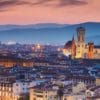
Explore Florence: A Renaissance marvel with stunning art, architecture, and a rich winemaking legacy, in the heart of Tuscany.
Read more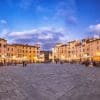
Explore Lucca, a tranquil Tuscan town with 16th-century walls, charming lanes, rich musical history, and picturesque biking trails.
Read more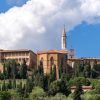
Discover Pienza's Renaissance Charm and Rich History in the Heart of Tuscany's Val d'Orcia. Explore Etruscan Roots, Renaissance Architecture, and Timeless Beauty.
Read more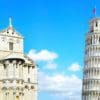
Discover Pisa's Rich History and La Dolce Vita - Beyond the Leaning Tower. Explore a Cultural Gem in Northern Tuscany.
Read more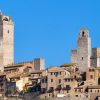
Explore San Gimignano, Tuscany's 'medieval Manhattan', with historic towers, charming streets, fine wines, and a rich, romantic history.
Read more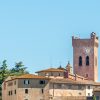
Discover San Miniato, the Tuscan gem: medieval allure, renowned truffle festival, diverse cultural theater, and panoramic valley views.
Read more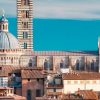
Discover Siena, a Tuscan gem with rich history, stunning medieval architecture, cultural wonders, and proximity to Italy's famous wine regions.
Read more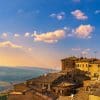
Volterra, 'Little Rome': A Tuscan gem where Etruscan artistry, medieval charm, and Renaissance beauty blend in a picturesque setting.
Read moreIf you would like us to customize an exclusive luxury tour, contact us and let us know your travel plans. We offer luxury food and wine tours for private groups of a minimum two guests. In addition, all of our private, chauffeured tours are available year-round upon request.

